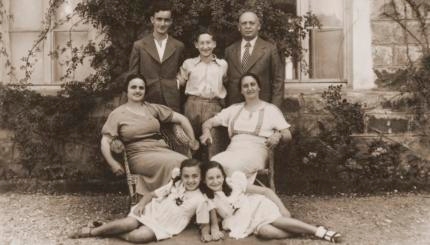The gratitude I feel watching my older daughter’s thrill while singing a Ladino song with me cannot be measured. It is a tug at my heart I did not know was possible before I had children. While, at three-and-a-half years old, she might not understand the meaning of each word, she knows that they contain something joyous within them. Her face lights up as she sings the playful melodies with me.
Ladino, or Judeo-Spanish, is the hybrid language that Spanish Jews developed after their expulsion from the Iberian Peninsula in the 15th century. This beautiful language has survived for more than five centuries. It was the first language of my grandfather, and it is still spoken today by Sephardic Jews across the globe. But it is fading fast.
I am so grateful to have this rich culture as part of my heritage, and I want others to experience its joy and beauty before it is too late. I have spent my career reimagining Ladino culture in a way that makes it more accessible to new generations, as I want to do everything I can to ensure my children grow up in a world where Ladino still exists. So I’ve written a bilingual children’s book. All about gratitude.
The blessing for being grateful for waking up each morning is the Modeh Ani prayer. In Ladino, it’s atorgo yo. We thank God for renewing our souls so that we can start anew each morning. What greater joy than to begin each day with thanks!
In my book, Ora de despertar (Time to wake up!), I’ve connected the Modeh Ani prayer with my own Ladino/English prose about the joys of waking up in the morning. Illustrated with bright colors and bright scenes of brushing teeth and tying shoes, this children’s book offers an entirely different look at contemporary Sephardic life today. The book’s illustrations feature a Sephardic girl doing everyday morning things, expanding our understanding of who looks Jewish. Using interwoven Ladino and English (a first for a children’s book!), I want readers to be able to experience the gratitude of each morning, no matter the language or cultural background. Gratitude, after all, is universal.
I am so grateful that I get to share this joyous Ladino culture with others, whether Sephardic or not. I want the book to reflect this exact joy—to show the joyous diversity that makes up our collective Jewish culture. Being grateful is what will bring Ladino forward. We must be thankful for the beauty and power that lies within its words and music and history. I know my children will be grateful for its survival, and I believe yours will be as well.



